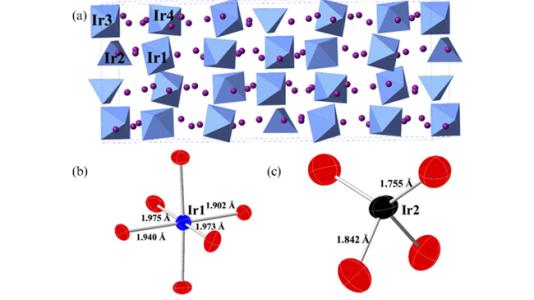
Scientific Achievement
We discovered a new iridate, Sr9Ir3O17, which is the first reported transition metal oxide containing a low-spin, tetrahedrally coordinated ion in the solid state.
Significance and Impact
Sr9Ir3O17 challenges crystal chemical norms that tetrahedra with partially occupied d-states are high-spin and provides a recipe for designing other such violators.
Research Details
- Sr9Ir3O17 contains IrO6 octahedra and IrO4 tetrahedra; electronic structure corroborated by X-ray absorption near edge spectroscopy, magnetic susceptibility and DFT with inclusion of spin-orbit coupling and electron correlation.
- Local spin models do not explain magnetic susceptibility, reflecting strong Ir-O hybridization and requiring description in terms of the IrO4 and IrO6 clusters.
- Ir5+ (d4) in the tetrahedron maximizes the crystal field stabilization energy of the low spin e4t20 configuration by exploiting the strong overlap between Ir 5 d and O 2p orbitals.
Argonne National Laboratory seeks solutions to pressing national problems in science and technology. The nation’s first national laboratory, Argonne conducts leading-edge basic and applied scientific research in virtually every scientific discipline. Argonne researchers work closely with researchers from hundreds of companies, universities, and federal, state and municipal agencies to help them solve their specific problems, advance America’s scientific leadership and prepare the nation for a better future. With employees from more than 60 nations, Argonne is managed by UChicago Argonne, LLC for the U.S. Department of Energy’s Office of Science.
The U.S. Department of Energy’s Office of Science is the single largest supporter of basic research in the physical sciences in the United States and is working to address some of the most pressing challenges of our time. For more information, visit https://energy.gov/science.